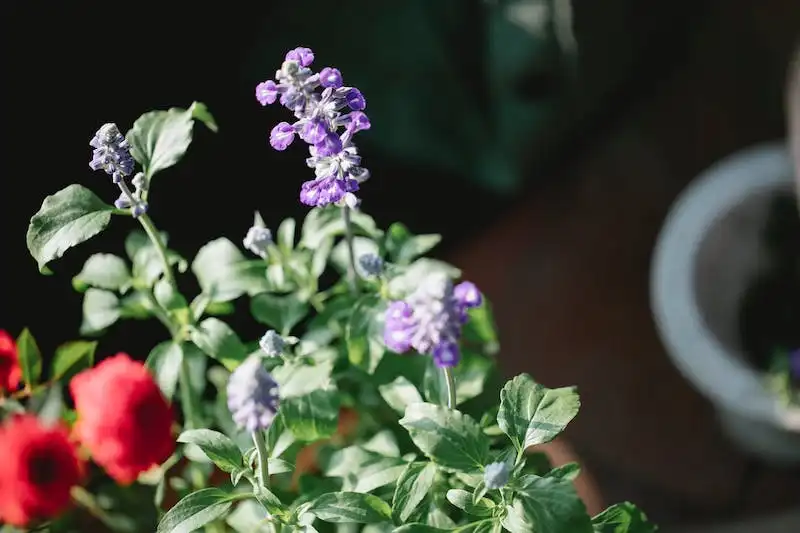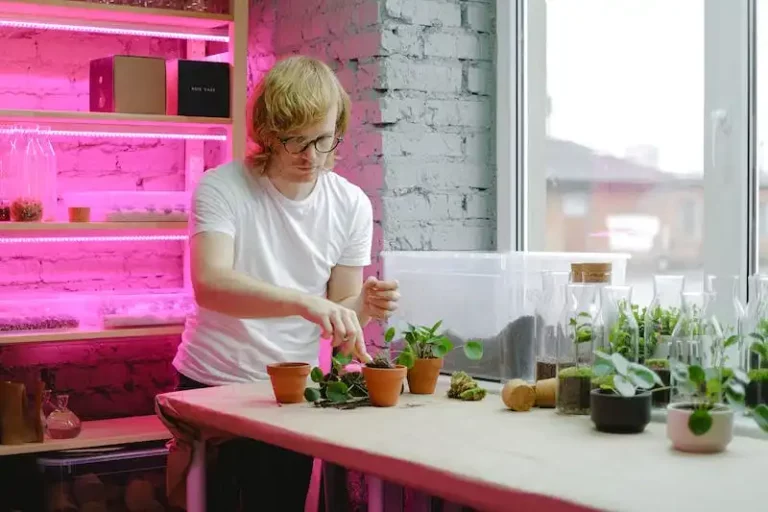Black spot is a common disease that affects roses, causing black spots to appear on the leaves. It can be a frustrating problem for gardeners, but with proper management and treatment, it can be controlled and prevented. In this article, we will discuss the causes of black spot, how to identify it, and effective treatments to prevent and manage this disease.
Black spot is caused by a fungal pathogen called Diplocarpon rosae. The fungus thrives in warm and humid conditions, making it a common problem in regions with hot, humid summers, such as Florida. The symptoms of black spot include circular black spots on the leaves, which may turn yellowish and cause defoliation if left untreated.
To effectively treat and prevent black spot, it’s important to first identify the disease. If you notice black spots on your roses, closely examine the affected leaves and look for the characteristic circular black spots. You can also consult a plant specialist or a local gardening committee for a more accurate identification.
Preventing black spot starts with proper rose care. Watering your roses from the base, rather than from above, will help prevent the spread of the disease. Additionally, pruning and clearing out any diseased canes or leaves will help control the spread of the fungus. When planting new roses, choose disease-resistant varieties, and plant them in well-drained soil. Applying preventative sprays, such as synthetic fungicides or organic treatments, can also be effective in controlling the disease.
Black Spot On Rose Bushes – How To Get Rid Of Black Spot Roses
Black spot is a common fungal disease that affects rose bushes. If you have a rose garden, you may get worried over black spot, as it can quickly spread and weaken your plants. In Florida, where the climate is much more humid, black spot is a particularly troublesome issue for gardeners.
There are several options available to treat and prevent black spot on roses. Synthetic sprays are often marketed as a quick-fix solution, but they can have adverse effects on the environment and the health of your plants. What causes black spot and how can you prevent it without resorting to harmful chemical sprays?
- Causes: Black spot is caused by a fungus called Diplocarpon rosae. It thrives in humid and warm conditions, making it more prevalent during the rainy season. Spores are easily spread by wind, water, and gardeners’ tools, contributing to the rapid distribution of the disease.
- Prevention: Prevention is key when it comes to black spot. Regularly clearing fallen leaves, as they can harbor the fungus, is essential. Avoid watering your rose bushes at night, as wet foliage promotes the growth of black spot. Instead, water them early in the morning so that the leaves have time to dry out before nightfall.
- Sprays and Biopesticides: There are biopesticides available that can help prevent black spot on roses. These chemical-free options work by inhibiting the growth of the fungus. They can be applied as a preventative measure or at the early stages of infection. It is important to read and follow the instructions carefully.
- Curing and Clearing: If your roses are already affected by black spot, there are steps you can take to cure the disease. Start by removing and destroying any infected leaves and canes. This will help prevent the spread of the disease to healthy parts of the plant.
- Resistant Roses: Another option is to replace susceptible rose varieties with disease-resistant ones. Many rose breeders have focused on creating varieties that are more resistant to black spot. These roses may still get some black spot, but they are generally able to withstand the disease better than their susceptible counterparts.
- Consulting a Specialist: If black spot continues to be a problem in your garden and none of the above methods have been effective, it may be helpful to consult a rose specialist. They can provide guidance on specific varieties that are known to be more resistant to black spot and recommend other methods for prevention and treatment.
In conclusion, getting rid of black spot on rose bushes requires a proactive approach. Take preventive measures such as clearing fallen leaves and watering in the morning, use biopesticides for prevention and early stage treatment, and consider replacing susceptible roses with disease-resistant varieties. By following these tips, you can help keep your roses healthy and beautiful.
What Causes Black Spots on Rose Bush Leaves
Black spots on rose bush leaves are a common problem for gardeners, and they can be both frustrating and detrimental to the health of your roses. The black spots are caused by a fungus called Diplocarpon rosae, which is commonly known as black spot fungus. This fungus thrives in warm and humid conditions, making rose bushes particularly susceptible to infection.
The black spot fungus usually starts to appear on the lower leaves of the rose bush and then spreads upward, eventually affecting the entire plant if left untreated. The spots on the leaves are initially small and dark, but as they grow, they can become larger and develop a yellowish halo around them. In severe cases, the leaves may turn yellow and eventually drop from the bush.
There are several factors that can contribute to the development of black spot fungus on rose bush leaves. One of the main factors is the presence of moisture on the leaves. Watering your roses from overhead, especially in the evening or at night, can create the perfect environment for the fungus to thrive. It’s best to water your roses in the morning and avoid getting the leaves wet.
Another factor that can contribute to the development of black spot fungus is overcrowding. If your rose bushes are planted too closely together, it can create a damp and humid environment that is conducive to fungal growth. Make sure to space your roses properly to allow for good air circulation.
Some rose varieties are more susceptible to black spot fungus than others. Traditional hybrid teas and floribundas are generally more prone to infection, while some shrub roses and old garden roses are more resistant. However, even resistant varieties can still develop black spot if conditions are favorable.
Preventing and managing black spot on rose bush leaves is essential for the overall health and beauty of your roses. There are several options for treating and preventing black spot. One option is to remove infected leaves as soon as you notice them. This can help stop the spread of the fungus and prevent further contagion. Another option is to use a fungicide spray specially formulated to treat black spot. These sprays can be purchased at garden centers and online resources.
Gardeners can also take a proactive approach to preventing black spot by ensuring their roses are in optimal health. This includes regular pruning to promote good air circulation and removing any weeds or dead plant material from around the rose bush. Fertilizing with a balanced rose food and watering deeply and infrequently can also help strengthen the plant’s natural defenses against diseases like black spot.
In conclusion, black spots on rose bush leaves are caused by the fungus Diplocarpon rosae, commonly known as black spot fungus. This fungus thrives in warm and humid conditions. Preventing black spot involves practices such as watering in the morning, spacing rose bushes adequately, and promoting good air circulation. If black spot does occur, removing infected leaves and using a fungicide spray can help manage the problem. Taking steps to improve the overall health of your roses can also help prevent black spot from developing.
How to Control Black Spot on Roses
Black spot is a common fungal disease that affects roses, causing dark spots to appear on the leaves. If left untreated, it can weaken the plant and ultimately lead to its death. Fortunately, there are several tips and treatments available to help control and prevent black spot on roses.
1. Routine Spot Spotting: Regularly inspect your rose bushes for any signs of black spot. This can include black or dark brown spots on the leaves, yellowing leaves, or leaf drop. If you spot any of these symptoms, it’s important to take action.
2. Remove Infected Leaves: The first step in controlling black spot is to remove any infected leaves from the plant. This helps prevent the disease from spreading further. Be sure to dispose of the infected leaves properly, either by burning them or placing them in sealed bags and throwing them away.
3. Clean the Area: Black spot can overwinter on fallen leaves and canes, so it’s important to clear any fallen debris from the garden. This helps reduce the risk of reinfection in the following season.
4. Prune Infected Wood: If the disease has spread to the stems or canes of the rose plant, it’s important to prune away the infected wood. Make clean cuts, removing at least 1 inch below the affected area. Disinfect your pruning tools between cuts to avoid spreading the disease.
5. Proper Watering: Black spot thrives in humid conditions, so it’s important to water your roses at the base rather than overhead. This helps keep the leaves dry and reduces the risk of fungal growth. Water in the morning, allowing the leaves to dry before evening.
6. Soil Treatment: Treating the soil around your roses with a fungicide can help prevent black spot. Follow the instructions on the fungicide label for the correct application and timing.
7. Resistant Varieties: Consider replacing your roses with varieties that are resistant to black spot. There are many varieties available that have been bred to be more resistant to fungal diseases.
8. Professional Help: If you’re unable to control black spot on your roses with these options, consider seeking professional help. A professional gardener or horticulturist may be able to provide more specific advice and treatments.
By following these tips and treatments, you can control and prevent black spot on your roses, allowing them to thrive and bloom for years to come.




